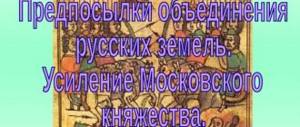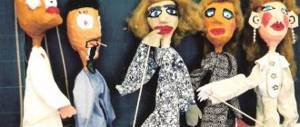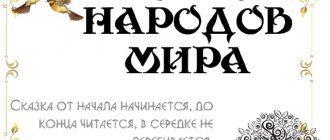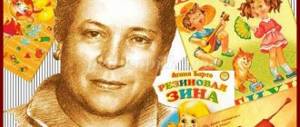creative project “Dolls-amulets”
TABLE OF CONTENTS
| Introduction | 3 |
| The history of the doll | 3 |
| Types of dolls | 6 |
| Amulet dolls for the home | 6 |
| Economic justification | 8 |
| Conclusion | 8 |
| List of used literature | 10 |
INTRODUCTION
“Whoever does not play with dolls does not know happiness! "- says a Russian folk proverb
Interest in folk crafts in the modern world is growing. And this happens because once upon a time a gap, an emptiness, formed here. And now there is a great need to fill it. Our today's desire to know what a folk toy was, how it was played and what it meant, lies not only educational interest, but also a natural desire to know and remember the past of our people.
The Russian doll is considered one of the most mysterious symbols of Russia. This is not just a children's toy, it is an integral attribute of ancient rituals. Since time immemorial, craftsmen have mastered the art of making such dolls, which have absorbed all the cultural traditions and customs of Rus'.
It was believed that dolls made by hand from scrap materials had magical properties. Our ancestors believed that dolls were able to ward off evil spirits and bring happiness to the house. This is probably why these dolls were often worn as talismans.
Target:
— To awaken young people’s interest in Russian culture and traditional folk dolls.
Tasks:
- Study the history of the emergence of amulets dolls.
- Study the types of amulets dolls.
- Consider different ways of making amulets dolls.
- Making amulets dolls using learned techniques and methods.
HISTORY OF THE FOLK DOLL
Since ancient times, a rag doll has been a traditional toy of the Russian people. Playing with dolls was encouraged by adults because... By playing in them, the child learned how to run a household and acquired the image of a family. The doll was not just a toy, but a symbol of procreation, a guarantee of family happiness.
She accompanied a person from birth to death and was an indispensable attribute of any holidays. Now there are 90 types of dolls known. The folk rag doll was not just a toy, it had a certain function: it was believed that such a doll protected children’s sleep and protected the child from evil forces. Often the doll was made faceless. According to ancient beliefs, an evil spirit cannot live in a doll without a face (i.e. without a soul). Firstly, the toy was not standard even within the same street. Each family did it differently. The Ivanov dolls were different from the Petrov dolls. They bore the imprint of the mental environment of these families, their understanding of the world. Secondly, they put their love and wisdom into the toys that fathers and mothers and grandparents created for their children. The children felt this and treated their dolls and toys with care. Is it possible to throw away parental love?
Most dolls in Rus' were amulets. Dolls - amulets in Rus' trace their history back to ancient pagan times. They are made from natural materials that are brought from the forest: wood, vine, grass, straw. And this is no coincidence, because the forest is the habitat of the Russian people. Dolls made from birch wood are a talisman of family happiness. Aspen has always been considered dangerous for evil spirits, so dolls made on the basis of aspen wood are amulets for the home, driving away evil spirits from the home. The main feature of Russian folk dolls is a clean face, without a nose, mouth or eyes. Because according to ancient beliefs, it was believed that “if you do not draw a face, then evil spirits will not move in and will not bring harm to either the child or the adult.” According to legend, such a doll once saved a life by replacing a person during a sacrifice. Then the amulets began to have other “responsibilities.” Wedding lovebirds protect a young family from the evil eye, and fever dolls will drive away all illnesses.
In puppet games, children involuntarily learned to sew, embroider, spin, and learned the traditional art of dressing. The doll stood in direct relation to the activities of the future member of society.
The need for communication was clearly expressed in the toy. It was one of those centuries-tested means with the help of which the older generation could convey, and the younger generation could accept, preserve and pass on an important part of their accumulated life experience.
Since ancient times, a traditional toy in the life of the Russian village, even in the poorest peasant families, has been a rag doll. In other houses, up to a hundred of them accumulated.
Dolls were not just girls' fun. All the children played until they were 7-8 years old, while they wore shirts. But only boys began to wear portages, and girls began to wear skirts; their playing roles and the games themselves were strictly separated.
While the children were small, their mothers, grandmothers, and older sisters sewed dolls for them. From the age of five, any girl could do such a nursery rhyme.
Of course, ritual dolls cannot be considered children's toys. After all, a traditional rag doll is faceless. The face, as a rule, was not marked and remained white. In the villages they explained this simply by the inability to paint a face beautifully, and there were no such paints. But the meaning is much deeper. A doll without a face was considered an inanimate object, inaccessible to the instillation of evil, unkind forces into it, and therefore harmless to the child. She was supposed to bring him prosperity, health, joy. This is a miracle: from several rags, without arms, without legs, without a designated face, the character of the doll was conveyed. The doll had many faces, she could laugh and cry.
The very image of a village rag doll is close to folklore: “White-faced, busty and with a braid, of course, and dressed up anywhere.” Here the beauty of the girl was materialized in a doll that corresponded to the symbol - the beautiful image of girlhood.
Using the same techniques, amulets were also made from rags. These are twelve “licious dolls”: “Ogneya”, “Ledea”, “Shaking”, etc., personifying, according to popular belief, Herod’s daughters. Usually such dolls hung in the hut near the stove, protecting the owners from illness.
The dolls from the northern provinces wear a traditional sundress and a solid kokoshnik, trimmed with a mesh underneath made of white and transparent beads, continuing the tradition of pearl trims.
And the costumes of the peasant women of the Ryazan province are characterized by a riot of colors. The doll is dressed in a traditional poneva with stitching, which is always richly decorated, in a shirt with embroidered sleeves, and always a female “magpie” headdress with an embroidered headdress and a beaded headdress at the back of the headdress.
TYPES OF DOLLS.
According to their purpose, dolls are divided into three large groups: amulets, play and ritual dolls. Amulet dolls are “for the home”, “for mother and child”, “for the bride and groom”.
AMUL DOLLS FOR THE HOME.
A talisman is an amulet or a magic spell that saves a person from various dangers, as well as an object on which the spell is cast and which is worn on the body as a talisman.
Doll Plantain
Amulet for travelers. They were made small so that they could fit in a pocket or palm, and were supplied with a bundle for travel. In the old days, a handful of ash from the hearth or a small cracker was placed there
Doll - ten-handed
The ten-handle is the best helper in household chores. This doll was given to girls who were preparing a dowry for themselves or to a young mistress, so that everything would be in order, so that everything would go well. This doll's ten arms allow her to do everything!
Doll Krupenichka – Zernovushka
Krupenichka dolls are considered a talisman for prosperity and satiety.
Herbal egg pupa
This doll was filled with aromatic medicinal herbs. Kobyshka the Herbalist makes sure that no diseases enter the house.
Dolls are feverish
12 figurines suspended on a red thread above the stove were supposed to scare away the disease-bringing demons-shakers. Their names were:
Shaking, Fire, Ledeya, Gnetea, Breast, Deaf, Lomeya, Puffy, Yellow, Korkusha, Looking, Neveya
Commands the sisters - the elder sister named Kumoha - the demoness of the spring cold
Day and night
Doll-amulet of the home. It symbolized the day. In the morning they turned to the bright side with wishes and requests for a successful day in business. In the evening before going to bed, we turned to the dark side - so that the night would pass peacefully.
3 ECONOMIC JUSTIFICATION
Cost of raw materials, materials, accessories per unit of product
| Name of materials | Unit | Unit costs | ||
| Consumption rate | price, rub. | Amount, rub. | ||
| Cotton fabric | m | 0,20 | 60 | 12,0 |
| Canvas | m | 0,05 | 80 | 4,0 |
| Ribbons | m | 0,5 | 6 | 3,0 |
| Threads | m | 1 | 25 | 25,0 |
| TOTAL: | 44 | |||
CONCLUSION
A doll is a sign of a person, his play image-symbol. In this role, she focuses time, cultural history, the history of the country and people, reflecting their movement and development. Those who study folk culture and who strive to convey its precious grains to their descendants turn to this fertile source of spirituality.
The traditional rag doll is experiencing a true revival in today's Russia. The man-made patchwork figurine now performs a new communicative function. It has become a living means of communication and familiarization with folk cultural experience.
Dolls are not only toys, but also close friends. In games with dolls, children learn to communicate, fantasize, create, show mercy, and train their memory. But the main thing in these games is emotional contact with the doll. Children don't just get used to dolls - they become attached to them as if they were living beings and are painfully separated from them.
A doll is not born on its own: it is created by a person. It comes to life through the imagination and will of its creator. Being part of the culture of all humanity, the doll retains in its image the originality and characteristic features of the people who create it. This is the main value of a traditional folk doll.
As a result of the project, the following was achieved:
the history of traditional Russian folk dolls and its types was studied;
implementation technology has been mastered;
a methodological manual was prepared;
samples were made;
BIBLIOGRAPHY
Dine, G.L. Russian rag doll. Culture, traditions, technology [Text] / G.L. Dine, M.N. Dain.- M.: Culture and Traditions, 2007.- 120 p.
Zimina, Z.I. Textile ritual dolls [Text] / Z.I. Zimina. —
Kotova, I.N. Russian rituals and traditions. Folk doll [Text] / I.N. Kotova, A.S. Kotova. - St. Petersburg, Paritet, 2003. - 240 p.
Folk doll: [Electronic resource] //vedjena.gallery. –2008.
Russian ritual dolls: [Electronic resource] //club.osinka. –2008.
Manual Work: Electronic resource]: ///handmade.idvz .- 2008.
Creative project “Folk rag doll”
Making dolls.
Working with doll making patterns.
Design of stands by types of dolls.
Album design - attachments to ready-made dolls.
The history of rag dolls.
The most ancient toys were found by archaeologists in Siberia. These were figurines of women carved from soft stones or mammoth ivory. They were made 35-12 thousand years BC. What do you think they were made for? Many ancient peoples sacrificed people to them to appease the gods. Our ancestors, the ancient Slavs, also had such a custom. They sacrificed women to the goddess of fertility. But one day it occurred to someone to give the gods a doll instead of a living woman. And the gods did not refuse this toy! Such dolls were called ritual dolls. Clay rattles, dishes, hatchets, and human figurines were later discovered. According to the cult of ancestors, the dead have magical powers and can provide protection and assistance. To attract the spirits of the dead, figurines were made for them to inhabit - prototypes of future dolls. Ancient types of dolls or human figurines were idol-like images with pronounced gender characteristics. The most common among toys has always been the doll. Clay, wooden, and rag dolls existed among peasants for several centuries and had different meanings. Dolls were largely associated with all sorts of rituals during the holidays. The Russian language dictionary by S.I. Ozhigov explains that a doll is a children's toy in the form of a human figurine. But it is not so.
Initially, a rag doll was an element of ritual rituals, and not a toy for children. Dolls were made as a talisman for the home, as well as against the evil eye and diseases. Hopes were pinned on them to protect the harvest, preserve wealth and bring prosperity “to the court.” These dolls were not sewn, “so as not to sew up happiness,” they were not knitted (in the modern sense of the word), they were not knocked together. They were rolled from pieces of fabric and sticks, tied from straw, and wound from threads and yarn. The parts from which the “dolls” were made were tied and twisted together. They also “twisted” and tied with threads, taking into account the direction from east to west. They prayed while working on the amulet.
In the manufacture of these dolls, cutting and piercing objects were used so that the life of the child or person to whom the doll is given was “not cut or stabbed” (needles, scissors, knives). Fabric and threads were torn by hand into neat strips and squares, symbolizing the transition from chaos to order. Another interesting thing is that the fabrics for making amulets were taken “worn”. And not just any fabric that came to hand, but only from those clothes that during their “life” brought joy to the owner, and were worn for holidays and prayers. According to the laws of folk life, a worn-out item was again included in the cycle of life. Thus, it was believed that worn fabric contained a piece of human vitality. Therefore, people believed that the magical power of these small figures would be positive and good.







